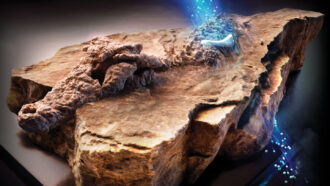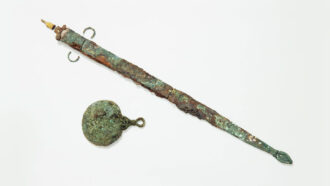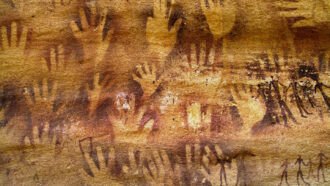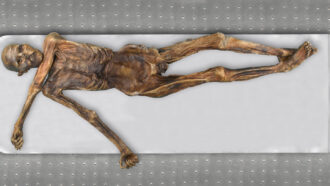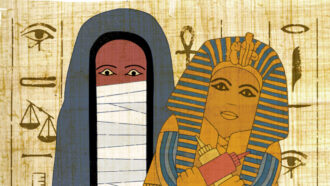Symbols from the Stone Age
Rocks found in a cave suggest the people used objects and colors to stand for other things more than 90,000 years ago.
By Emily Sohn
Now, some anthropologists say that our ancestors may have been smarter than we usually give them credit for. Rocks recently found in a cave in Israel suggest that people were using objects and colors to represent other things more than 90,000 years ago. This kind of symbolic thinking—where, for example, the color red might stand for danger or a shape for a certain animal—was long thought to be a more recent development.
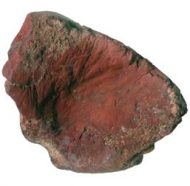 |
|
An ancient lump of red ocher dug up at a cave in Israel shows evidence of scraping by stone tools.
|
| G. Laron, Institute of Archaeology, Hebrew University |
In the Qafzeh Cave in Israel, Erella Hovers of the Hebrew University of Jerusalem looked at human remains dating back more than 90,000 years. Among some of the oldest skeletons, the researchers found 71 pieces of a type of pigment called red ocher along with ocher-stained stone tools. Chemical analyses suggest that the ocher had been heated.
Hovers and her coworkers suspect that people brought lumps of ocher to the cave, heated them up, and used them with mollusk shells for symbolic reasons when they buried their dead. Even today, some cultures use red to symbolize fertility or life.
Other researchers argue that using ocher was only a preliminary step. They think that real symbolic culture developed only about 50,000 years ago. More advanced kinds of symbolism, such as books and magazines, didn’t come along until much later than that.
